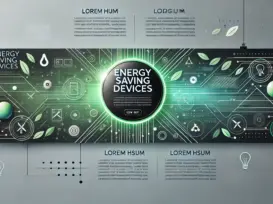Grus Home Energy - home energy savings
Maximize Your Home's Efficiency: Proven Strategies for Substantial Energy Savings
Maximize Your Home’s Efficiency: Proven Strategies for Substantial Energy Savings
With energy prices on the rise and environmental concerns becoming more pressing, homeowners are increasingly looking for ways to reduce their energy consumption and costs. Achieving substantial energy savings at home doesn’t just benefit your wallet; it also contributes to the global effort to save the environment by reducing greenhouse gas emissions. The strategies outlined here are designed to help you maximize your home’s efficiency and significantly cut down on your energy bills.
One of the simplest yet effective strategies is to optimize your thermostat settings. In the winter, setting your thermostat to 68°F (20°C) when you’re awake and lowering it while you sleep or are away from home can lead to considerable savings. Conversely, in the summer, keeping it at 78°F (25°C) when you’re home and higher when you’re not can reduce your cooling costs. Investing in a programmable or smart thermostat can automate these adjustments and enhance savings.
Insulation plays a critical role in home energy efficiency. Properly insulating your attic, walls, and floors will keep warm air from escaping in the winter and entering in the summer. This means your heating and cooling systems won’t have to work as hard, leading to lower energy consumption. Additionally, sealing leaks and drafts around doors, windows, and electrical outlets with weatherstripping, caulk, or foam sealants can prevent energy waste and improve comfort.
Upgrading to energy-efficient appliances is another impactful step. Look for products with the ENERGY STAR label, which indicates that they meet strict energy efficiency guidelines set by the U.S. Environmental Protection Agency. Replacing old refrigerators, washing machines, dryers, and other appliances with ENERGY STAR-rated models can lead to significant savings over time.
Moreover, lighting accounts for a considerable portion of home energy use. Switching to LED bulbs can make a huge difference as they use at least 75% less energy and last 25 times longer than traditional incandescent bulbs. Also, remember to turn off lights when they’re not needed and consider using timers or occupancy sensors to automate lighting control.
Water heating is another area where savings can be realized. Lowering your water heater’s temperature to 120°F (49°C) can reduce your water heating costs by up to 10%. Additionally, insulating your water heater and hot water pipes will prevent heat loss, saving energy and money. If it’s time to replace your water heater, consider a tankless model, which only heats water on demand and is more energy-efficient than traditional tank models.
Investing in renewable energy sources, such as solar panels, can also lead to long-term energy savings. Although the upfront cost may be significant, the reduction in your energy bills and potential tax incentives or rebates can make solar power a financially sound choice. Plus, you’ll be producing clean energy, which is great for the environment.
Lastly, adopting energy-saving habits is essential. Simple actions like washing clothes in cold water, air-drying dishes, using power strips to turn off electronics when not in use, and regular maintenance of heating and cooling systems can add up to major energy savings.
In conclusion, there are myriad ways to save home energy, ranging from quick fixes to long-term investments. By implementing these strategies, you can not only enjoy a more energy-efficient home but also contribute to a healthier planet. Remember, every small change you make can have a significant impact when combined with efforts from people around the world.
©2025 All Rights Reserved. Grus IoT Co.,Ltd.


